There is often 2 types of horses in this modern world, leisure horses and competition horses. Both types can get injured just being a typical horse and spooking at that scary tree!
But as we have developed the sporting world, we have developed the horses within them, and this in turn has improved performance, but has also created another set of problems…in the fact performance and longevity do not seem to go together! Therefore this blog is aimed at discussing key conformation and breed traits for each of the main sports, and their links to injury.
Dressage
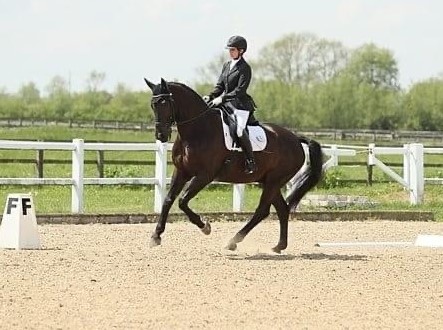
Dressage horses are designed for elaborate movements, and the levels are designed to gradually allow a horse to learn and adapt physically, and any horses not properly “designed” for Dressage, will usually start to struggle and not be able to progress any further. Typically we go for warmblood breed horses, meaning they have the athleticism of a Thoroughbred (hot blood) and the power of a draft horse (cold blood).
We look for specific conformation traits such as:
- Sloping pelvis assists with greater collection with a longer back to improve suppleness (Van Weeren and Crevier-Denoix, 2006)
- Intermediate hock joint angles (155-165.5°) for elevation (Gnagey et al. 2006)
- Many prefer broken back pastern axis as believe it is an indicator of greater suppleness and long femur for length of movement (Van Weeren and Crevier-Denoix, 2006)
- Uphill (wither high) conformation to facilitate working ‘uphill’ and powering from their hindquarters
- Sloping shoulder angle creates greater stride length and extension (Weller et al. 2006)
- Large gap between mandible and wing of atlas, to provide room for collecting on to the bit and arching of the neck (Van Weeren and Crevier-Denoix, 2006)
Therefore, although we all love seeing a cob doing dressage…they just don’t stand up to the requirements at top level!
Show Jumping
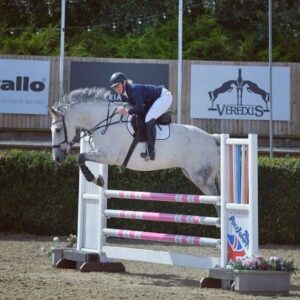
Show jumpers require power as-well-as quick agility for jump offs. Show jumpers must endure extreme landing forces through the leading forelimb, and large torsional forces through their lumbosacral joint.
We often look for:
- Small-moderate tarsal angles (<155° – 165.5°) to generate more vertical impulse and absorb more concussion (Gnagey et al. 2006; Senna et al. 2015)
- Wide and long pelvis/base wide to propel the body with minimum energy expenditure due to larger muscles and without energy deviating from the sagittal (forward/backward) plane, with a flatter pelvis assisting with longer stride for propulsion (Senna et al. 2015)
- Upright pastern suggested to be favourable for jumping as it is associated with a lower risk of early retirement
- Upright (105° +) and long shoulder suggested to give greater scapula movement for jumping (Mostafa et al. 2019)
- Short backs to create less strain through the lumbar area (Morscher, 2010)
- Long tibias (stifle to hock) assist with power and jumping ability as are usually associated with more angulated stifles (Senna et al. 2015)
There is no specific breeding that goes with this, but at top level it is often a form of warmblood/sports horse that manages to encompass this all along with the speed, athleticism and training!
Eventing
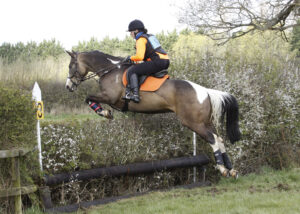
Eventers need to encompass the traits for Dressage and Show Jumping, as-well-as be physically capable to withstand galloping around a cross country course.
Therefore they often encompass the conformational traits of a show jumper combined with the balance and back strength of the dressage horse, along with the characteristics required for the endurance horse such as straight forelimbs and movement and a “lighter frame” than a traditional Dressage horse or Show Jumper needs to be. A rectangle shape is usually preferred to encompass a mixture of these traits (point of shoulder to point of buttock same length as wither to the ground), however a long back is not desired (Morscher, 2010). Additionally, symmetry is vitally important to maintain top level performance (Leśniak, 2020). Within eventing focus is on preventing undesirable conformational traits such as sickle (curb) hocks, long backs, long sloping pasterns, etc, than choosing adequate conformation, as temperament and the lack of abnormal traits seems more desirable to athletes (Morscher, 2010).
Racing – NH and Flat
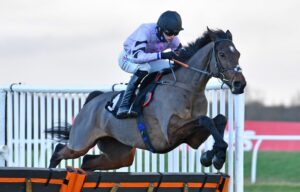
It is not unknown racehorses are bred for speed and not for longevity, speed requires:
- A straight limb is a prerequisite to endure the stress of training and racing
- National Hunt requires larger measurements in neck, forelimb and pelvis length and greater tibia and hoof circumference to withstand the extra forces (Weller et al. 2006)
- NH also requires larger hooves due to the time of year they tend to race to endure the wetter ground
- Small thin bones to reduce weight
- Sloping shoulders for length of stride (Pocock and Litten-Brown, 2009), and flatter pelvises for greater hindlimb extension and pelvic fracture prevention (Weller et al. 2006)
- Wide intramandibular groove for greater respiratory performance (Marks, 2000)
Where don’t performance and longevity see eye to eye?

More sloping, flat foot conformation is predisposed to tendon injuries due to it causing extra pull at the back aspect of the limb and can cause caudal heel pain (navicular). However, upright hooves and pasterns are also not desirable and are prone to concussion and arthritis, with show jumping causing even more concussion and predisposing to concussive issues like sidebone or ringbone, and cause issues higher up the limb (Marks, 2000).
Sufficient bone (circumference at top of cannon below the knee) should be roughly 20cm per 450kg-500kg bodyweight, with less than this being considered fine boned and increased risk of injury which is often the case in Thorougbreds (Draper, 2017), therefore increased concussion from sporting activities can increase the risk of fractures further (Marks, 2000).
Straight hocked conformation predisposes to hindlimb lameness due to increased concussion up the limb and less “spring” dissipation of the forces. This means hock arthritis and suspensory ligament injuries become more likely (Marks, 2000; Dyson, 2018), and as in horses the hock and stifle are linked through the reciprocal apparatus, stifle injuries are also commonplace from this conformation, alongside upright stifles causing conditions such as upward fixation of the patella (locking stifle) (Barrey et al. 2002).
Being croup high is also not just biomechanically displeasing by causing them to naturally be on the forehand, but has been found to predispose to conditions such as sacroiliac pain (Dyson, 2018)
Additionally, any conformational faults make injury more likely, such as distal limb deviations can cause splints due to mediolateral imbalance, and make fractures more likely; uneven feet increase the risk for injury show jumpers due to uneven weightbearing between the forelimbs and excessive forces during landing. And of course a croup high conformation predisposes to forelimb issues due to creating a naturally forward loading stance. However, some deviations can be desirable, such as carpal valgus (mild lateral rotation of the carpus “knee”, can prevent carpal effusion and fracture in racehorses by limiting forces directly at the front of the carpus (Anderson et al. 2010), although this conformation has then been linked to increased risk of flexor tendon failure (Weller et al. 2006).
However that does not mean a horse with perfect conformation will not get injured, as external factors like training and surface also come in to play!
What do I do with this information?
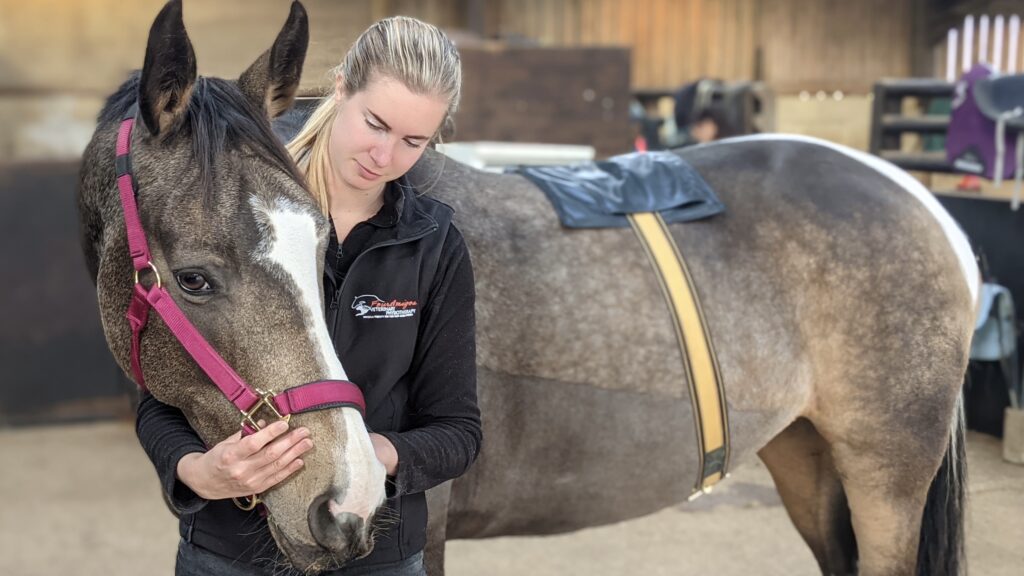
Regular physiotherapy is important to maintain strength, improve posture, and therefore prevent injury. For example an ex-racehorse would benefit from physiotherapy to improve back posture and try to prevent kissing spine. Additionally lessons with a good instructor who aim to improve a horses way of going for longevity and not just performance is imperative! And finally, working within a horse’s limits…if they have conformational faults, understanding this and how correct shoeing, correct training, and physiotherapy all play a role in keeping them as strong as possible for as long as possible, and not pushing beyond their performance capabilities is key. It takes a team, and a team you trust, so get a good one!
Additionally cross training methods, aka varying your surface type and exercise type has been shown to reduce injury risk and improve strength and proprioception, and reducing time in extended gaits prevents excessive soft tissue strain. So ensure your horse is fit for purpose, without over training the vital structures.
If you need any help, support, or advice, get in touch using the contact page!
References:
Anderson, T.M., McIlwraith, C.W., Duoay, P., 2010. The role of conformation in musculoskeletal problems in the racing Thoroughbred. Equine Veterinary Journal. https://doi.org/10.2746/0425164044864462
Barrey, E., Desliens, F., Poirel, D., Biau, S., Lemaire, S., Rivero, J.L.L., and Langlois, B., 2002. Early evaluation of dressage ability in different breeds. Equine Exercise Physiology: Equine Veterinary Journal. 34: 319-324
Draper, A., 2017. Weight limitations in horse riding: how big is too big? Vet Times. https://www.vettimes.co.uk/app/uploads/wp-post-to-pdf-enhanced-cache/1/weight-limitations-in-horse-riding-how-big-is-too-big.pdf
Dyson, S. 2018. Is there an association between conformation and lameness? UK-Vet Equine, 2(2): http://doi.org/10.12968/ukve 20182.2.57
Gnagey, L., Clayton, H.M., and Lanovaz, J.L., 2006. Effect of standing tarsal angle on joint kinematics and kinetics. The Equine Veterinary Journal; 38(7): 628-623
Leśniak, K., 2020. The incidence of, and relationship between, distal limb and facial asymmetry, and performance in the event horse. Comparative Exercise Physiology. 16(1): https://doi.org/10.3920/CEP190047
Marks, D. 2000. Conformation and soundness. AAEP Proceedings, 46: 39-45
Morscher, S., 2010. An analysis of conformation and performance variables in 3 day event horses in Ireland (Thesis). University of Limerick. https://ulir.ul.ie/bitstream/handle/10344/1639/2010_Morscher%2C%20S.pdf?sequence=6
Mostafa A.M., Senna, N., Abu-Seida, A., and Elemmawy, Y. 2019. Evaluation of Abnormal Limb Conformation in Jumping Thoroughbred Horses. Journal of the Hellenic Veterinary Medical Society, 70(2), 1533-1540. https://doi.org/10.12681/jhvms.20859
Pocock, L.J., Litten-Brown, J.C., 2009. Racehorse conformation and its potential to predict animal performance. Proceedings of the British Society of Animal Science, 5(5). doi:10.1017/s1752756200028441
Senna N.A., Mostafa M.B., Abu-Seida A.M., Elemmawy Y.M., 2015. Evaluation of limb conformation in jumping thoroughbred horses, Asian Journal of Animal Sciences, 9: 208-216
Van Weeren PR, Crevier-Denoix N. 2006. Equine conformation: clues to performance and soundness? Equine Veterinary Journal. 38(7): 591-596.
Weller, R., Pfau, T., Verheyen, K., May, S., and Wilson, A., 2006. The effect of conformation on orthopaedic health and performance in a cohort of national hunt racehorses: Preliminary results. Equine Veterinary Journal, 38: 622-627.

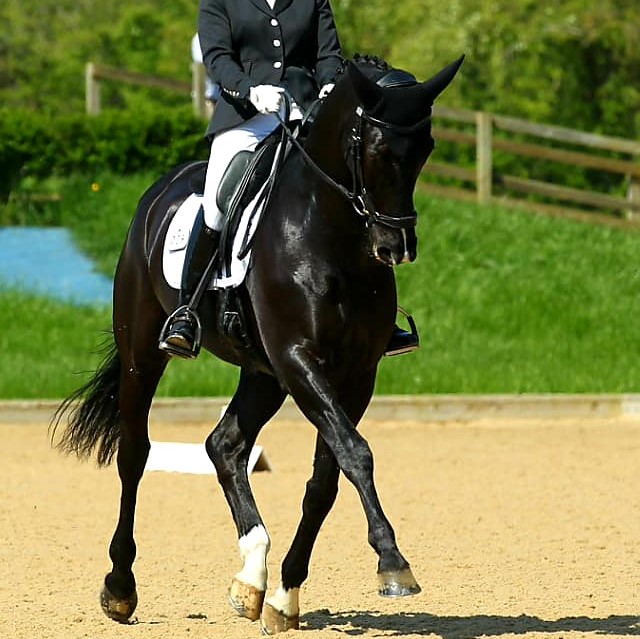
Have you ever considered adding more videos for your blog page posts to keep the readers more entertained? I indicate I just read through the entire post of yours and it was fairly very good but since Im more of a visual learner,I observed that to be more helpful nicely let me understand how it turns out! I enjoy what you guys are always up also. This kind of clever operate and reporting! Keep up the excellent works guys Ive added you guys to my blogroll. This is a great post thanks for sharing this informative information.. I will pay a visit to your blog site regularly for some latest publish.
I would love to add more videos however that means I have to remember to take them with clients 😉 but thanks for the feedback!